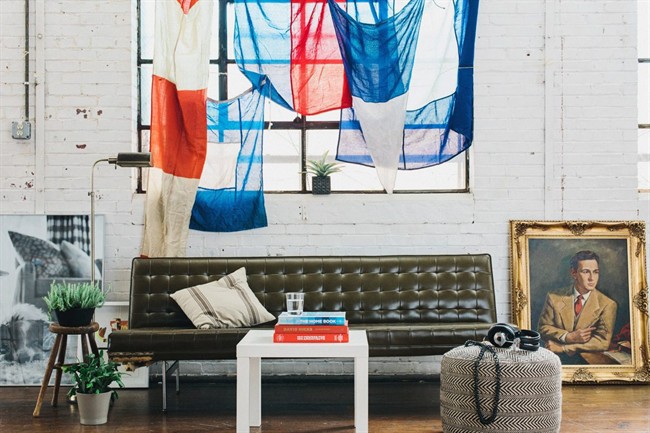It’s a difficult compromise: Many of us want our homes to look as stylish and carefully designed as the ones we see in decorating magazines. But we also want them to be comfortable and easy to enjoy.

“A relaxed lifestyle is something people want more and more, and their homes are reflecting that,” says New YorkCity-based designer Young Huh.
“The old rules of formal living, and therefore decorating, are disappearing. People want to have dinner parties with mismatched dishes, and candles and flowers that are casually and imperfectly arranged. They’re looking to enjoy themselves more and impress less,” Huh says. Designer Kate Jackson, based in Rhode Island, gets the same message from her clients. “I am typically asked to create a space that can be used more by family and friends,” she says, and to “lose whatever formality lives there.”
How do you pack a room with gorgeous style but also make it a place where you can comfortably kick back?
Some advice from interior designers on achieving that perfect middleground — gorgeous, relaxed style:
GO SOFT
Choose “seating that is comfortable enough to spend the entire day lounging,” Huh says, with plenty of pillows, throws and ottomans. Use slipcovers rather than structured upholstery, and opt for durable, touchable fabrics like washable cotton, stonewashed linen or soft burlap. For even more softness, layer smaller rugs ontop of a larger one. To add a burst of style, Los Angeles-based interior designer Brian Patrick Flynn suggests choosing some bold, graphic stripes rather than solid-colored fabrics.

Get breaking National news
“Relaxed interiors don’t always involve soft, muted colours and neutrals. They can be packed with colour and still be laid back and casual,” says Flynn.
“I’m a huge fan of an all-white backdrop with tons of saturated colour introduced with old objects like canvas flags, old maps, and even torn and tattered handmade rugs,” he says. “When the bold colour is introduced with texture and character, it adds a collected feel, almost like a sense of history.”
___
PERSONAL PIECES
Relaxed rooms include items that have personal meaning, such as heirlooms that might be worn or tattered by time. “Homeowners love when I incorporate special pieces that they already own into their ‘new design,'” Jackson says. “Whether it’s a familiar wooden box placed in the bookcase or a framed black and white photo from eras past, items of sentimental value that mingle with more modern and fresh accessories easily make a room feel special. A well-curated collection of books adds wonders and layers of personality to a room, too.”
Vintage items are “like buying that perfectly comfortable worn pair of jeans without having to break them in for years,” Huh says. “Imperfect, worn things in a room make you feel that you can touch everything and can withstand the wear and tear of a life that’s being fully lived. “With personal mementoes and hand-me-downs, consider scale — not too many huge items or too many small ones — and combine colours or styles that work well together.
“When you’ve got a bunch of meaningful items which aren’t from the same period or in a common colour scheme,” Flynn says, “you’ve just got to edit it all with a keen eye and a strong emphasis on mixing shapes, textures, sheens and patterns.” Huh agrees: “Attention to detail will keep a room from looking sloppy.”
___
FUNCTIONAL STYLE
Think about how you’ll be using a space, and then choose furniture that will work for you. If you’ll be watching movies, consider a sectional sofa where the whole family can camp out together. If you’ll entertain often, consider swivel chairs that make conversation easier.
It’s all about your convenience: Locate side tables where you’ll put down drinks. And if you’ll be reading, place lighting exactly where you’ll need it. You might even want to rethink a room’s purpose: “I’ve had clients ask me to repurpose their formal dining rooms to create a relaxed space that can be used on a daily basis,” Jackson says.


Comments